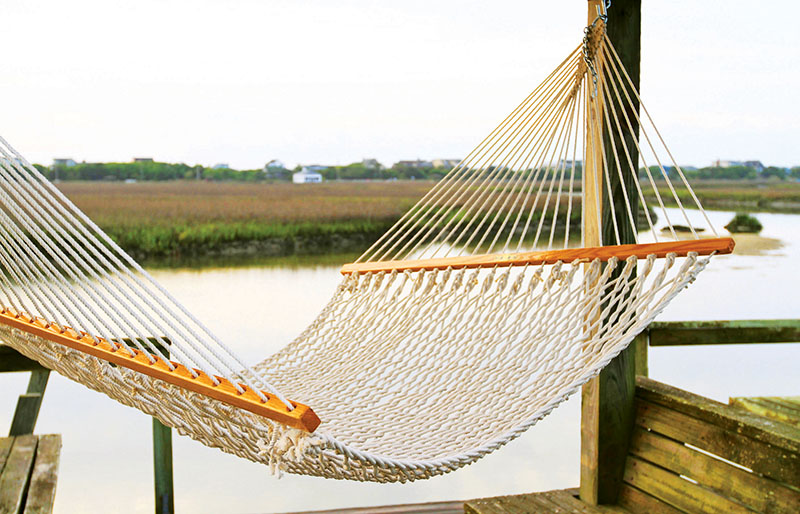Nothing, absolutely nothing, signifies luxuriously contented indolence more than a hammock, swaying gently in a warm ocean breeze, perhaps overlooking the beach or a pool.
Hammocks have been around for more than a thousand years, when Native Americans made them from the bark of the hamack tree, hence their name.
Originally intended for protection against animals on the ground at night, the primitive hammocks were taken to Europe by Christopher Columbus where they quickly became an airy alternative to traditional beds.
The world’s navies soon discovered hammocks provided their sailors with a secure berth, even in the roughest ocean conditions, and the future of this ingenious hanging bed was secured.
Before you buy a hammock, you need to define your needs, says Frank Rabey of Pawleys Island Hammocks, which handcrafted its first hammock 125 years ago in Pawleys Island, S.C., setting the design standard for the American style of rope hammock that’s followed by other manufacturers to this day.
“Modern hammocks have evolved enormously for more than a century,” he adds, “and buyers today face many choices of shapes, sizes, materials, and even soft padding for extra comfort.”
Pertinent questions to ponder: Will you use the hammock outdoors with partial shade (trees) or on a protected porch or gazebo? Will you use the hammock year round or just in the warmer seasons?
And, of course, how many will use the hammock at once? If you have relaxing with your significant other in mind, opt for spreader bars that keep the hammock from “cocooning.” Spreader bars also make access easier and allow you to “spread out” in comfort.
Armed with that knowledge, you can choose from various materials including traditional cotton, polyester or quick-dry materials for use by the pool or beach. You’ll also have a choice of traditional knotted hammocks or fabric hammocks with tufting, pillow-tops or quilting.
When it comes to hanging a hammock, the easiest (and most portable) option is to buy a hammock stand in either metal or wood, which allows your hammock to be moved to change your view or amount of shade.
If you prefer using trees or posts, keep in mind that standard hammocks are 13 feet from ring to ring. You’ll need at least 15 feet of space between trees or posts, and short lengths of chain can provide any adjustments needed.
You can screw hooks or eyes in a tree, but a more eco-sensitive choice is to place a tree-strap around the trunk, leaving the tree undamaged and allowing you to move your hammock easily.
A word of warning from my own experience. Once you and your family have enjoyed the delights of a breezy hammock, you’ll probably need more than one.
For more information on Pawleys Island Hammocks, visit pawleysislandhammocks.com.


